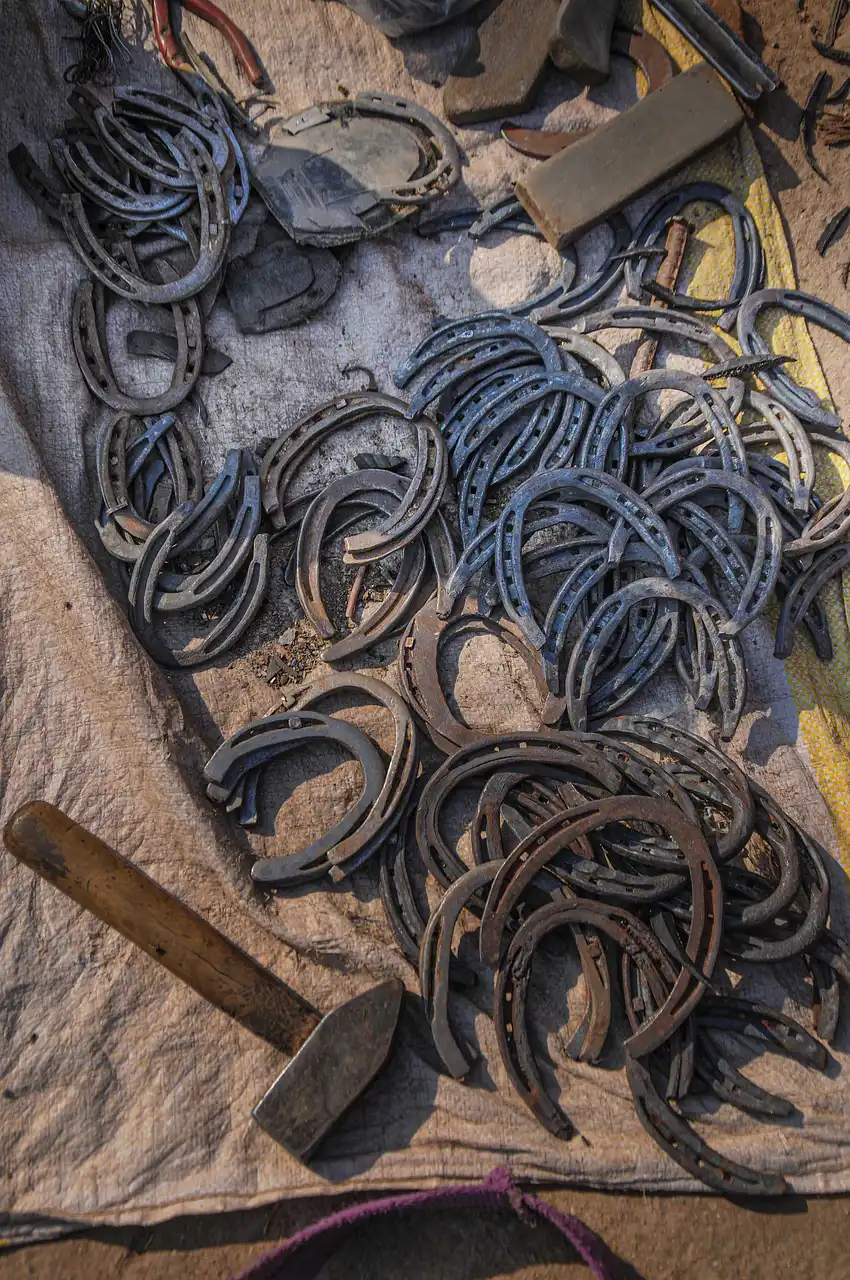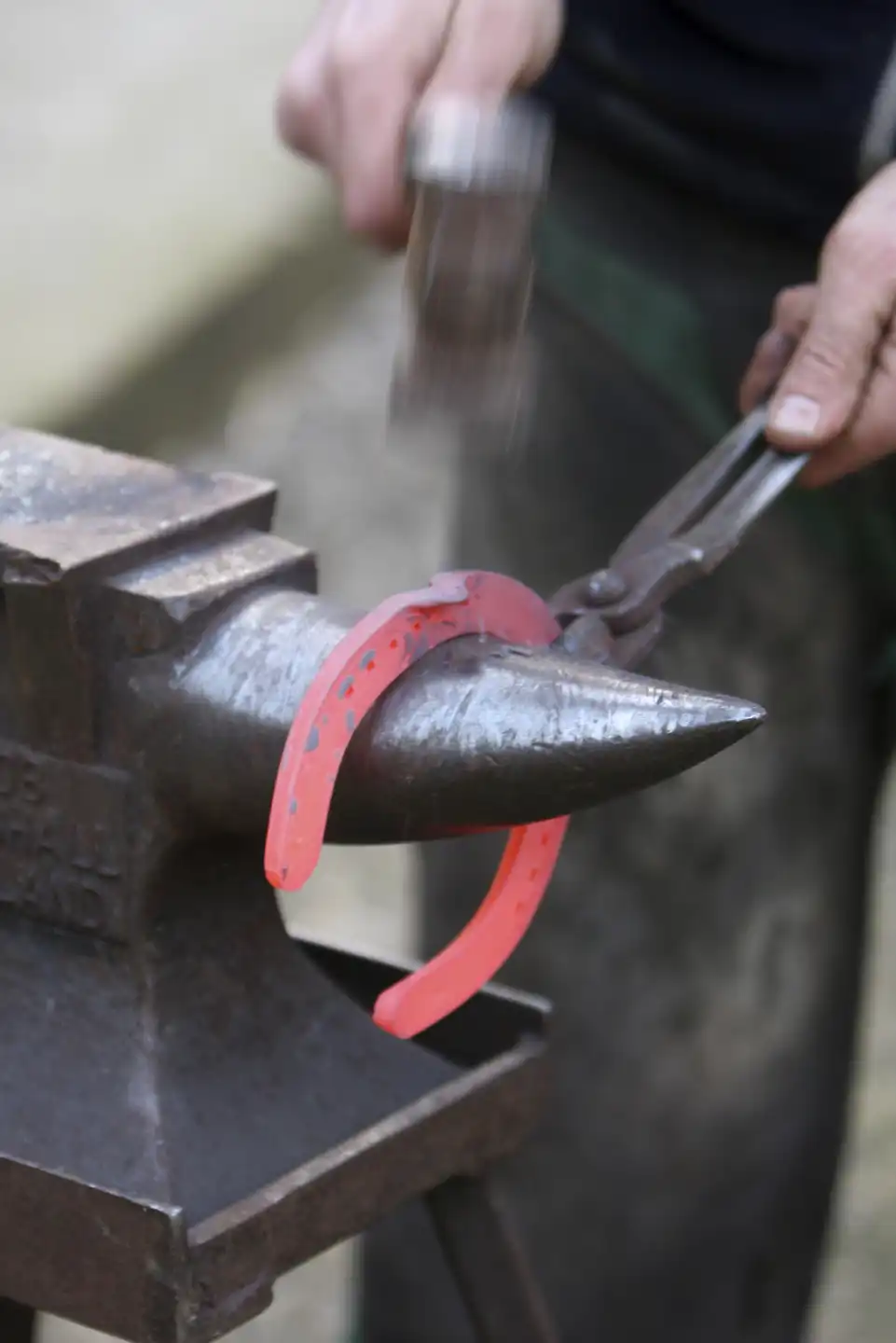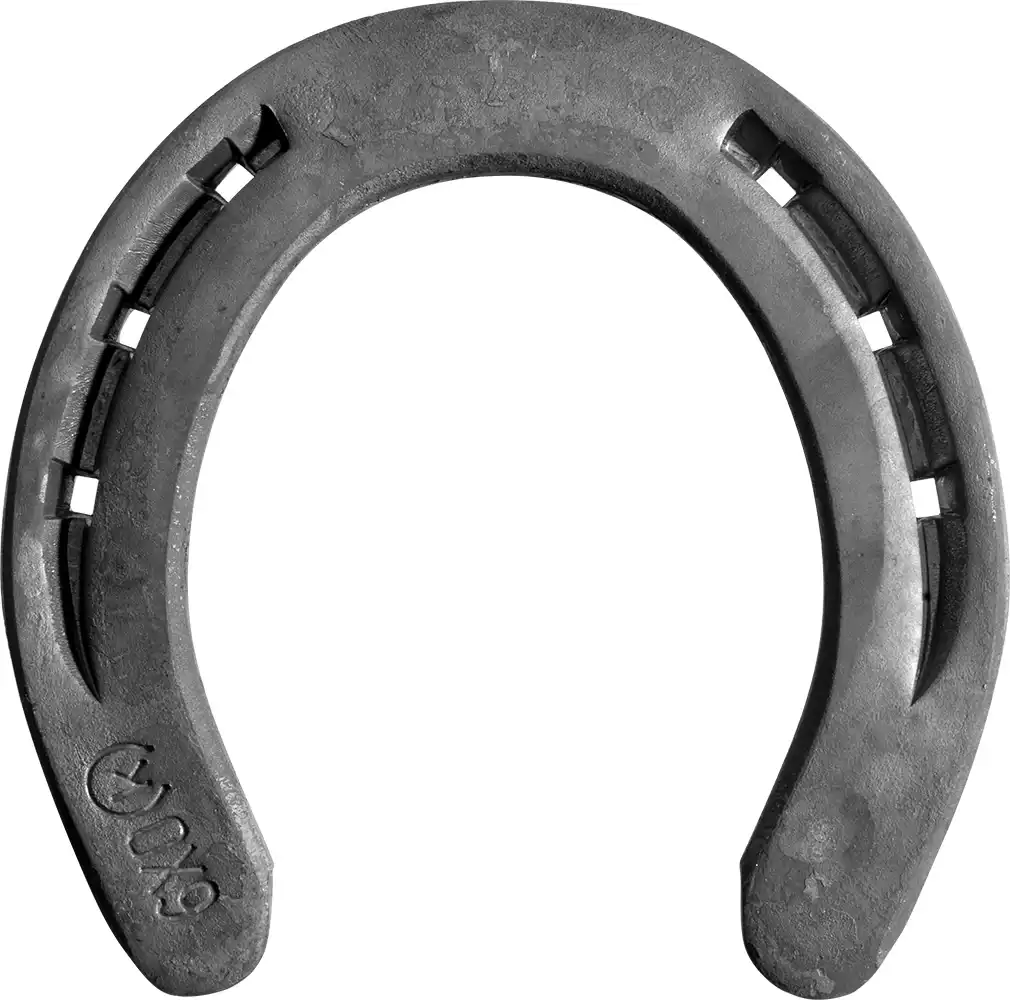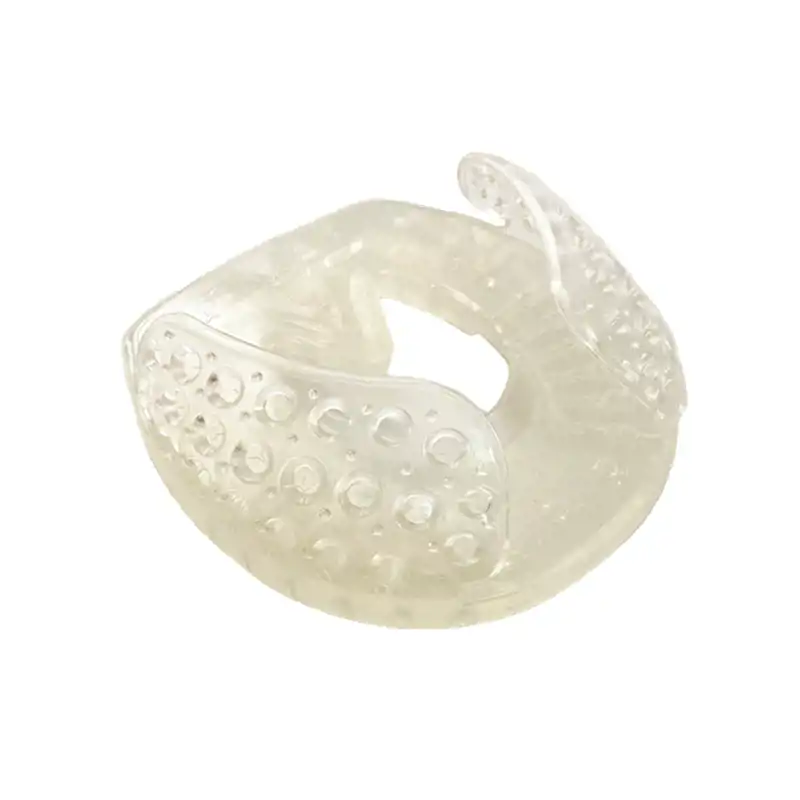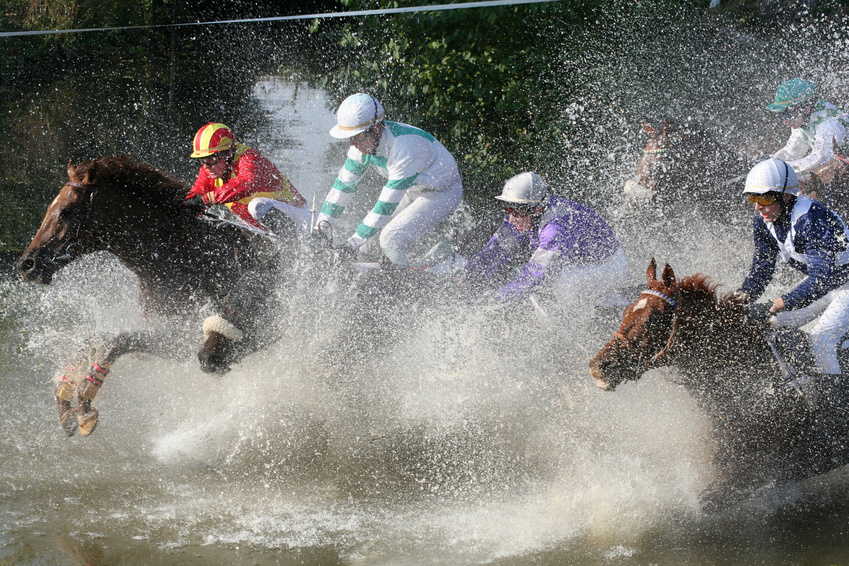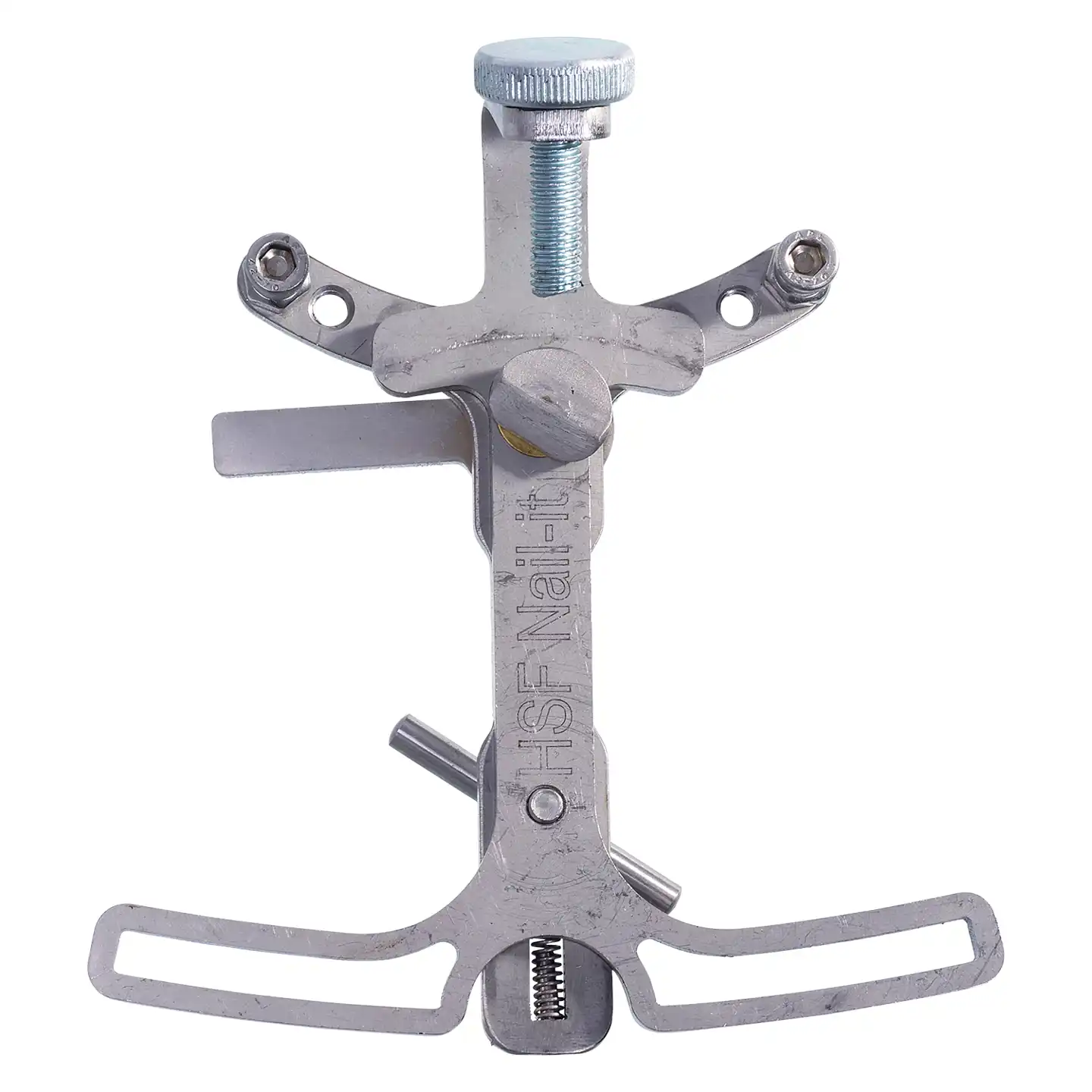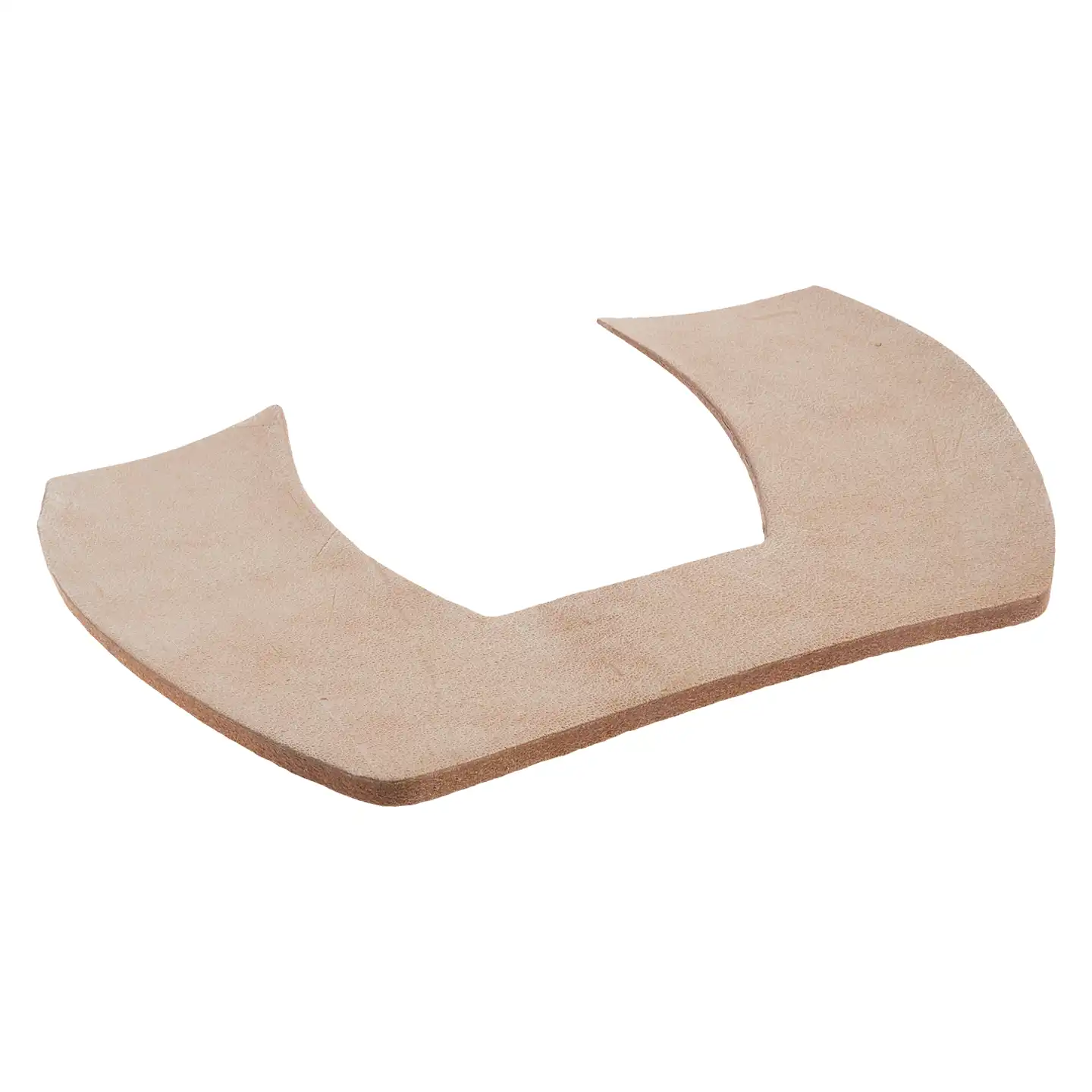Horseshoes - what do you know about them?
The origin of the horseshoe
From human hands to industrial production
The industrial production of horseshoes began in the 19th century. Before that, they were handcrafted by blacksmiths. The manufacture was a tedious and time-consuming process that required a great deal of skill and experience.
In the 19th century, however, machines were developed that automated manufacturing. These machines could produce horseshoes faster and more efficiently than blacksmiths could by hand. Industrial production made it possible to reduce costs and increase availability.
The first manufacturing machine was invented around 1835. This machine could produce horseshoes in large numbers and was a great success. In the years that followed, other manufacturing machines were developed that further improved production.
Industrial production also had an impact on the way horseshoes were made. They used to be hand forged and fitted to fit the horse's hoof perfectly. Manufactured using industrial production to standard sizes that fit a variety of horses.
The farrier's work
Most steel horseshoes are made in the Netherlands, where a great deal of expertise and experience has developed over time. This expertise makes it possible today to manufacture efficiently and with good quality using specially designed machines developed by these companies themselves. These Dutch horseshoes are now market leaders in Europe and are exported all over the world.
Smaller numbers are also manufactured in the United States and some countries in South America and Europe. They are also made in Asia these days.
The blacksmith buys the machine-made horseshoes and forms them with his skill at anvil, furnace and forging tools. To be able to do that, you have to have talent – and be lucky enough to meet a good teacher and then gain several years of experience.
For most horses, regular shoeing provides good protection against excessive hoof wear and provides the ability to drive and ride safely in different weather conditions with studs and pins on different surfaces such as ice, turf or mud.
Factory shoes allow you to work efficiently, but you still have to shape the horseshoe very precisely and perhaps forge a toe straighter or a branch wider.
Designs, forms and uses of horseshoes
On offer are many different designs suitable for different purposes and horses.
Here are some of the most common designs:
Flat shoes for the standard fitting
Regular shoeing is the simplest form of shoeing and requires only steel and nails. The design is flat with a fuller for the nails and a U-shaped base shape. The flat shoe is available in many different sizes and variants so that it can be optimally adapted to the hooves of different horses. Flat shoes such as DF-Kerckhaert, Libero-Mustad or Skill-Werkman offer the blacksmith an optimal opportunity to forge shoes to fit the horse's hoof and to achieve the desired movement and gait. The farrier can weld on a piece of steel and drill holes for traction with pins and studs.
Concave shoes
Concave shoes have a sloping internal edge and they are fullered through the toe. That means you can get extra traction with less weight.
Draft shoes are extra and thick shoes for draft horses
These extra heavy horses often have to walk on asphalt and pavement and need need stable shoes.
Break over shoes
If your horse has problems with his balance, such as the horse's hind foot touching the front foot when swinging forward or even knocking off the front shoe, horseshoes with a rounded toe such as the Equi-Librium, DF Quarter Motion and Warrior Special change the way the whole horse moves when landing and rolling. Consult your farrier and veterinarian to find the best shoeing solution for your horse.
Rocker shoe
A rocker shoe is a helpful tool in the treatment of any pathology or condition resulting from deep flexor tendon (TBS) overload. It can reduce the tension of the deep flexor tendon over the navicular bone, bursa and associated ligaments and reduce compressive forces on the sole corium, supporting sole growth and a stronger, thicker wall. Biomechanical properties can be further improved by incorporating more rocker action into the shoe. The turning or pivot point of this horseshoe is relatively close to the COP (center of pressure) of the hoof, allowing the horse to achieve its individual hoof angle.
In horses with restricted solar perfusion (blood supply), sole growth is minimal or not possible at all, since the dermis is not supplied with sufficient nutrients. By relieving the deep flexor muscles, the blood supply to the laminae and the sole of the hoof is increased. Properly adjusted rocker irons provide the continuous self-adjustment that the horse sometimes needs, even when stationary.
A rocker iron is also a tool to improve rigid sole growth, giving farriers and veterinarians an option to treat a variety of problems associated with thin, painful soles. Lateral radiographs are necessary for trimming the hoof and placing the shoe, and for assessing progress.
Straight bar shoe
Bar shoes have a bar in the rear area that offers the hoof more support in soft ground and reduces the deep sinking of the rear hoof section. Such closed horseshoes are often used for horses with hoof problems such as hoof joint inflammation or hoof cartilage injuries and injuries to the superficial flexor tendon.
Egg bar shoe
Egg bar shoes are oval in shape and provide additional support for the horse's carrying apparatus. They are often used for horses with hoof problems, tendon - ligament damage.
Heart bar shoes
Heart bar shoes have a heart-shaped bar at the back that is placed over the frog and are often used for horses that either have a circulatory problem in the hoof or need partial relief. The heart bar is intended to support (massage) the jet to improve blood circulation in the region
Aluminium horseshoe
They are made of aluminum, which is lighter, and are often used for horses with sensitive hooves or for horses that participate in competitions (races) where every gram counts.
Plastic shoes
Synthetic horseshoes are often used for horses that need flexible hoof protection (osteoarthritis) or that run on sensitive surfaces such as artificial turf. The main reason, however, is that the owners of stables or boarding houses (active stables) require synthetic shoes, especially on the rear hooves, to reduce the risk of injury, as horses are often kept in groups and could injure each other. In these stables, these shoes are the only alternative to barefoot!
Race plates
- Horseshoes for race horses are mainly light, steel or aluminium fittings suitable for racehorses, mostly thoroughbreds with a round hoof shape.
- There are countless alternatives for trotter racing horses to support or teach the horses to trot in an optimally balanced manner during a race or during training.
- There are also special irons for the disciplines of polo and western, which are required for practicing these sports.
Clips on horse shoes
The clips on the horseshoes are used to position the shoe well so that it can be held on the hoof as correctly as possible without unwanted displacement. The correct position of the toe clips must be determined for each horse's hoof, with the design and size of the clips per hoof size being important. Traditionally, the front hooves were shod with a toe clip and the hind hooves with side clips. However, many horses today are also shod with side clips at the front. Rolling over the toe is easier for the horse when on side clipped shoes, than for horses shoes with a toe clip. The optimized placement of the roll-off point can be achieved with side clipped shoes. In sport and show, a part of the horses are also shoed without clips. This shoeing without clips requires more experience and accuracy when shoeing. But not every horse can be shod in this way. With mediolateral deviations, it becomes difficult to keep a shoe in position. Nail-It is a helpful tool for quickly and easily fixing fittings without clips. It helps to position exactly on the desired roll-off point. Holds unclipped shoes in place when fastening with nails.
Shoeing and materials that are suitable to support malpositions, pathologies or injuries:
-
Horseshoes with thickened branch ends (primarily made of aluminum)
-
Wedge pads made of different materials
-
Conical insoles made of leather or synthetic materials with appropriate padding can be individually selected from a wide range
These heel elevations primarily serve to temporarily protect an overloaded area of the horse. This includes tendon injuries, pain in the palmar region (navicular bone, navicular bursa, insertion of the deep digital flexor tendon, etc.). Whenever possible, after healing, one will slowly return to another type of shoeing.
The great variety of different products helps us in most cases.
Shoeing for correction and support in cases of deviations in limb conformation and movement:
-
Horseshoes with one branch made wider are, for example, often used to support but not completely prevent outward rotation of the hind limb. Shoes with one-sided wider branches are also frequently recommended in cases of unilateral suspensory branch injuries and collateral ligament damage. Or, in a malalignment such as toe-in, a wider outer branch helps very well against outward rotation in the fetlock joint. Shoes with a wider toe section are often recommended by veterinarians when there are problems with the suspensory apparatus (at the suspensory ligament’s origin or insertion).
The toe-open shoe:There are various options: With a pointed hoof shape, the horse can swing the forelimb forward more quickly and the heel bar does not sink so deeply into soft ground. This provides relief for the deep digital flexor tendon. For this reason, a toe-open shoe is also often used in the treatment of laminitis.

